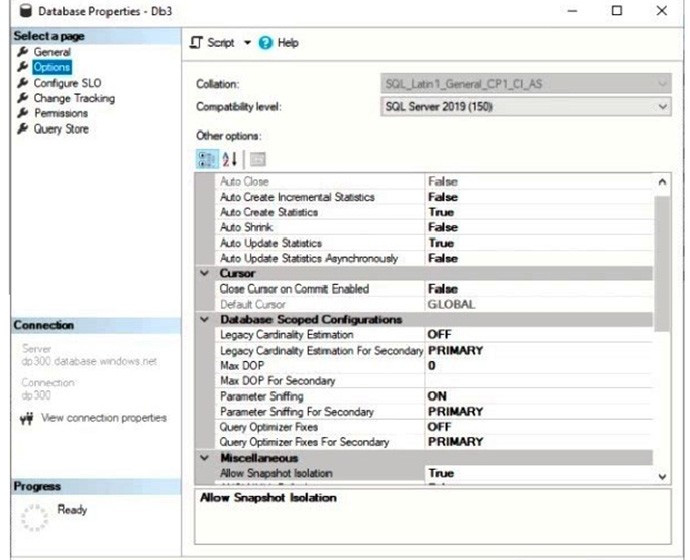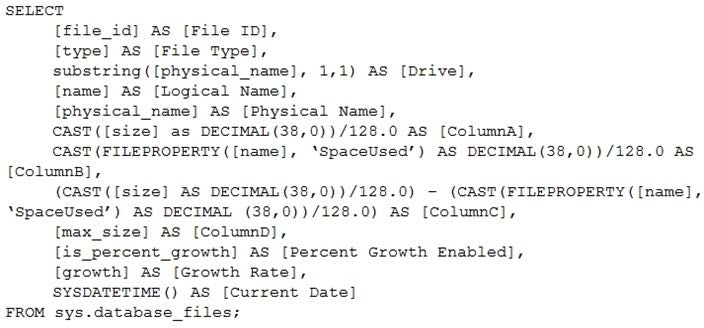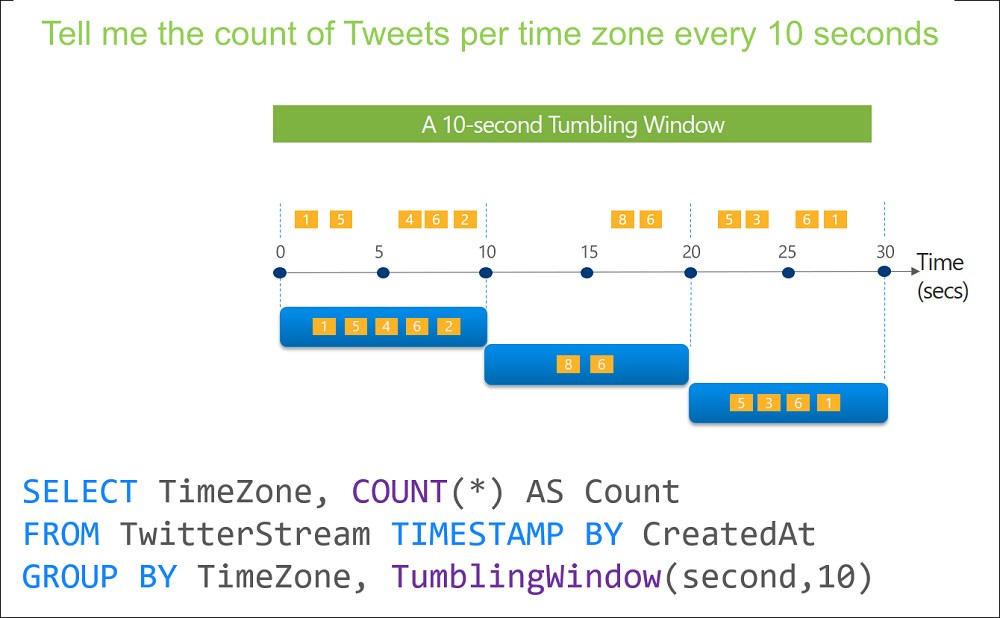Exam Details
Exam Code
:DP-300Exam Name
:Administering Relational Databases on Microsoft AzureCertification
:Microsoft CertificationsVendor
:MicrosoftTotal Questions
:368 Q&AsLast Updated
:Apr 01, 2025
Microsoft Microsoft Certifications DP-300 Questions & Answers
-
Question 191:
You need to implement a solution to notify the administrators. The solution must meet the monitoring requirements. What should you do?
A. Create an Azure Monitor alert rule that has a static threshold and assign the alert rule to an action group.
B. Add a diagnostic setting that logs QueryStoreRuntimeStatistics and streams to an Azure event hub.
C. Add a diagnostic setting that logs Timeouts and streams to an Azure event hub.
D. Create an Azure Monitor alert rule that has a dynamic threshold and assign the alert rule to an action group.
-
Question 192:
Which windowing function should you use to perform the streaming aggregation of the sales data?
A. Sliding
B. Hopping
C. Session
D. Tumbling
-
Question 193:
Which counter should you monitor for real-time processing to meet the technical requirements?
A. SU% Utilization
B. CPU% utilization
C. Concurrent users
D. Data Conversion Errors
-
Question 194:
You need to design a data retention solution for the Twitter feed data records. The solution must meet the customer sentiment analytics requirements. Which Azure Storage functionality should you include in the solution?
A. time-based retention
B. change feed
C. lifecycle management
D. soft delete
-
Question 195:
You need to implement the surrogate key for the retail store table. The solution must meet the sales transaction dataset requirements. What should you create?
A. a table that has a FOREIGN KEYconstraint
B. a table the has an IDENTITY property
C. a user-defined SEQUENCE object
D. a system-versioned temporal table
-
Question 196:
You have an Azure SQL database named DB3.
You need to provide a user named DevUser with the ability to view the properties of DB3 from Microsoft SQL Server Management Studio (SSMS) as shown in the exhibit. (Click the Exhibit tab.)

Which Transact-SQL command should you run?
A. GRANT SHOWPLAN TO DevUser
B. GRANT VIEW DEFINITION TO DevUser
C. GRANT VIEW DATABASE STATE TO DevUser
D. GRANT SELECT TO DevUser
-
Question 197:
You have the following Transact-SQL query.

Which column returned by the query represents the free space in each file?
A. ColumnA
B. ColumnB
C. ColumnC
D. ColumnD
-
Question 198:
What should you do after a failover of SalesSQLDb1 to ensure that the database remains accessible to SalesSQLDb1App1?
A. Configure SalesSQLDb1 as writable.
B. Update the connection strings of SalesSQLDb1App1.
C. Update the firewall rules of SalesSQLDb1.
D. Update the users in SalesSQLDb1.
-
Question 199:
You need to implement authentication for ResearchDB1. The solution must meet the security and compliance requirements.
What should you run as part of the implementation?
A. CREATE LOGIN and the FROM WINDOWS clause
B. CREATE USER and the FROM CERTIFICATE clause
C. CREATE USER and the FROM LOGIN clause
D. CREATE USER and the ASYMMETRIC KEY clause
E. CREATE USER and the FROM EXTERNAL PROVIDER clause
-
Question 200:
You need to identify the cause of the performance issues on SalesSQLDb1.
Which two dynamic management views should you use? Each correct answer presents part of the solution.
NOTE: Each correct selection is worth one point.
A. sys.dm_pdw_nodes_tran_locks
B. sys.dm_exec_compute_node_errors
C. sys.dm_exec_requests
D. sys.dm_cdc_errors
E. sys.dm_pdw_nodes_os_wait_stats
F. sys.dm_tran_locks
Related Exams:
62-193
Technology Literacy for Educators70-243
Administering and Deploying System Center 2012 Configuration Manager70-355
Universal Windows Platform – App Data, Services, and Coding Patterns77-420
Excel 201377-427
Excel 2013 Expert Part One77-725
Word 2016 Core Document Creation, Collaboration and Communication77-726
Word 2016 Expert Creating Documents for Effective Communication77-727
Excel 2016 Core Data Analysis, Manipulation, and Presentation77-728
Excel 2016 Expert: Interpreting Data for Insights77-731
Outlook 2016 Core Communication, Collaboration and Email Skills
Tips on How to Prepare for the Exams
Nowadays, the certification exams become more and more important and required by more and more enterprises when applying for a job. But how to prepare for the exam effectively? How to prepare for the exam in a short time with less efforts? How to get a ideal result and how to find the most reliable resources? Here on Vcedump.com, you will find all the answers. Vcedump.com provide not only Microsoft exam questions, answers and explanations but also complete assistance on your exam preparation and certification application. If you are confused on your DP-300 exam preparations and Microsoft certification application, do not hesitate to visit our Vcedump.com to find your solutions here.
